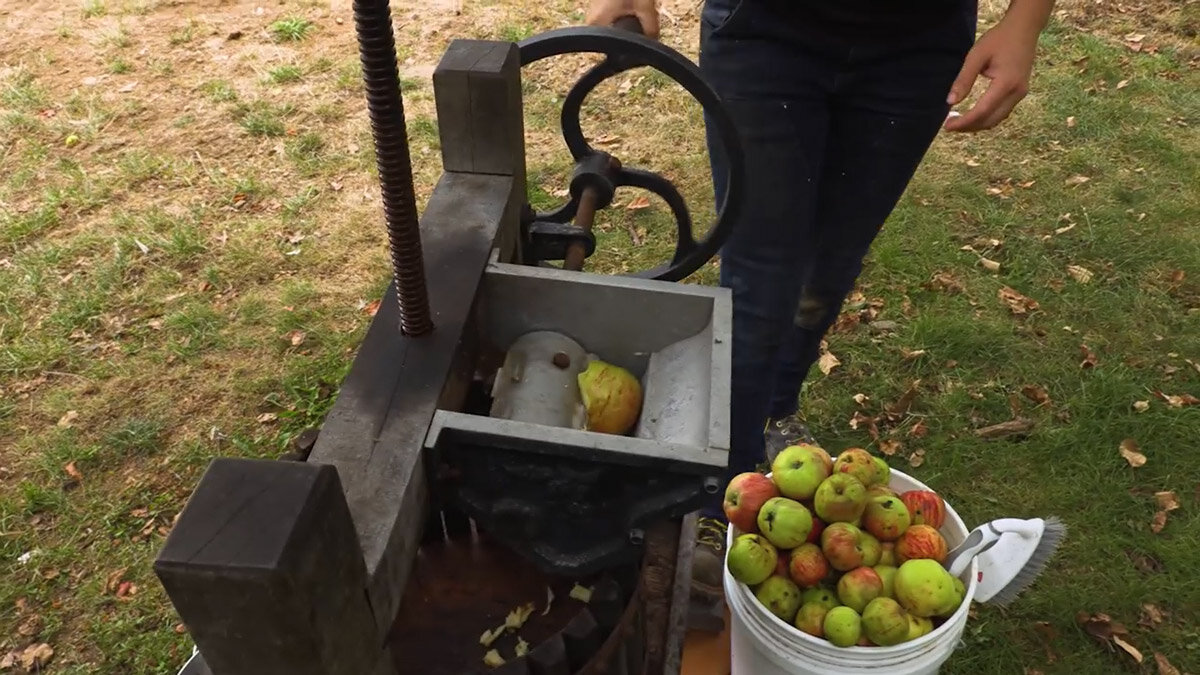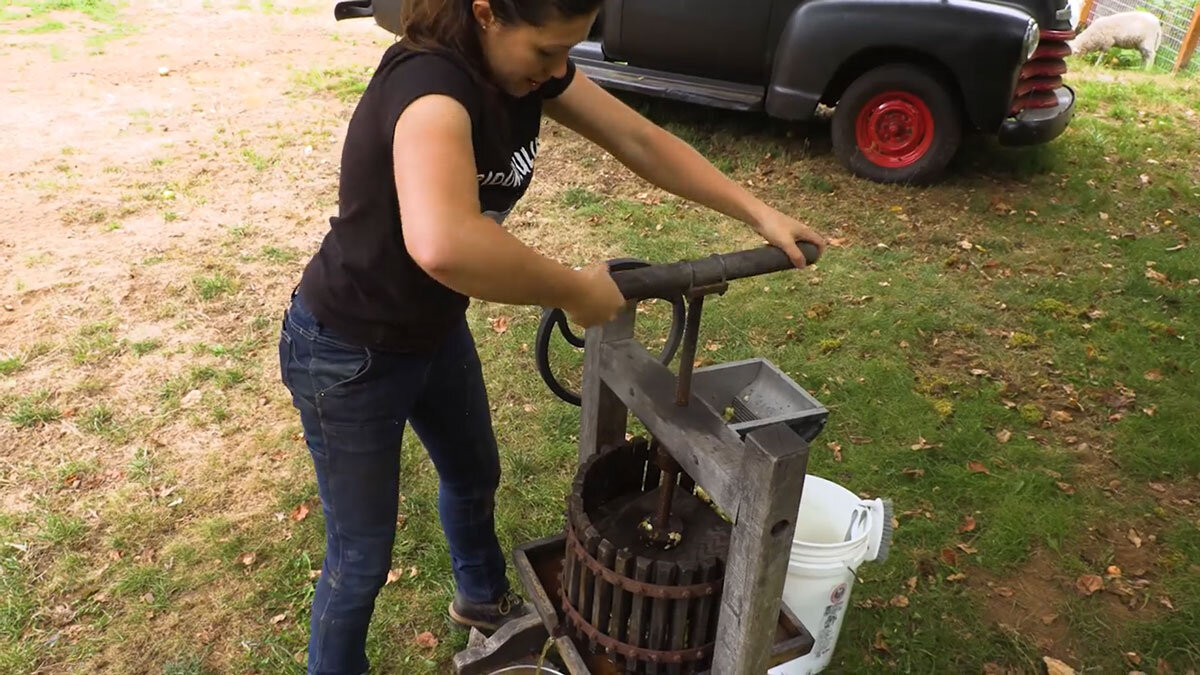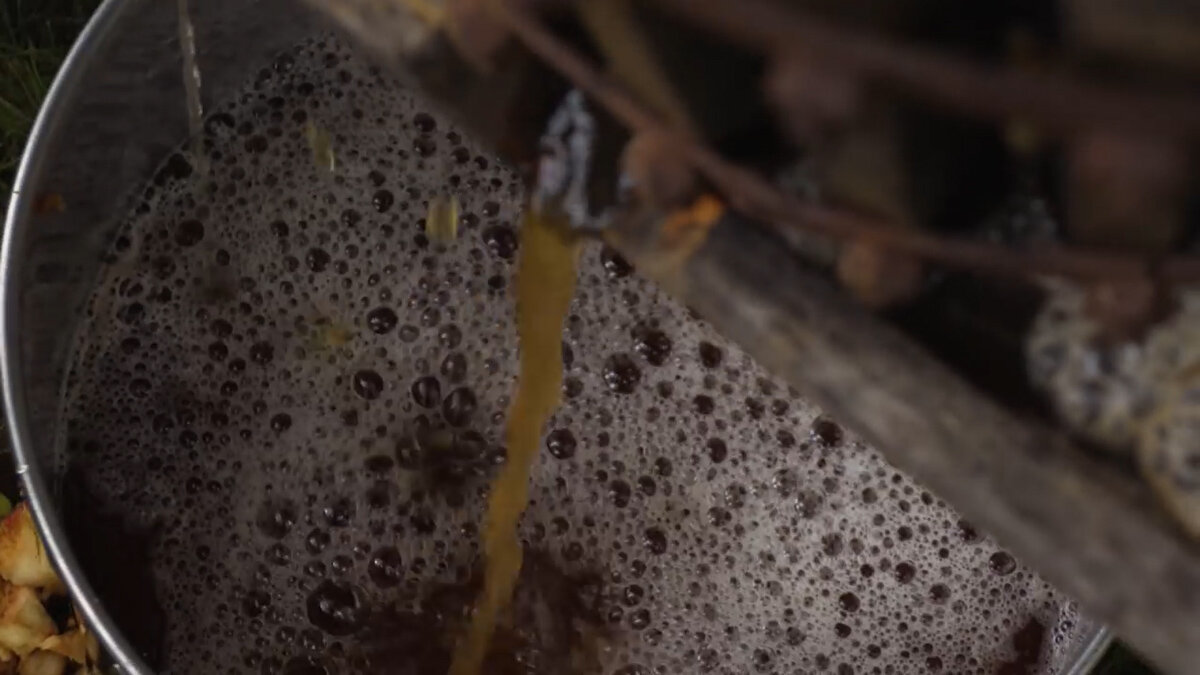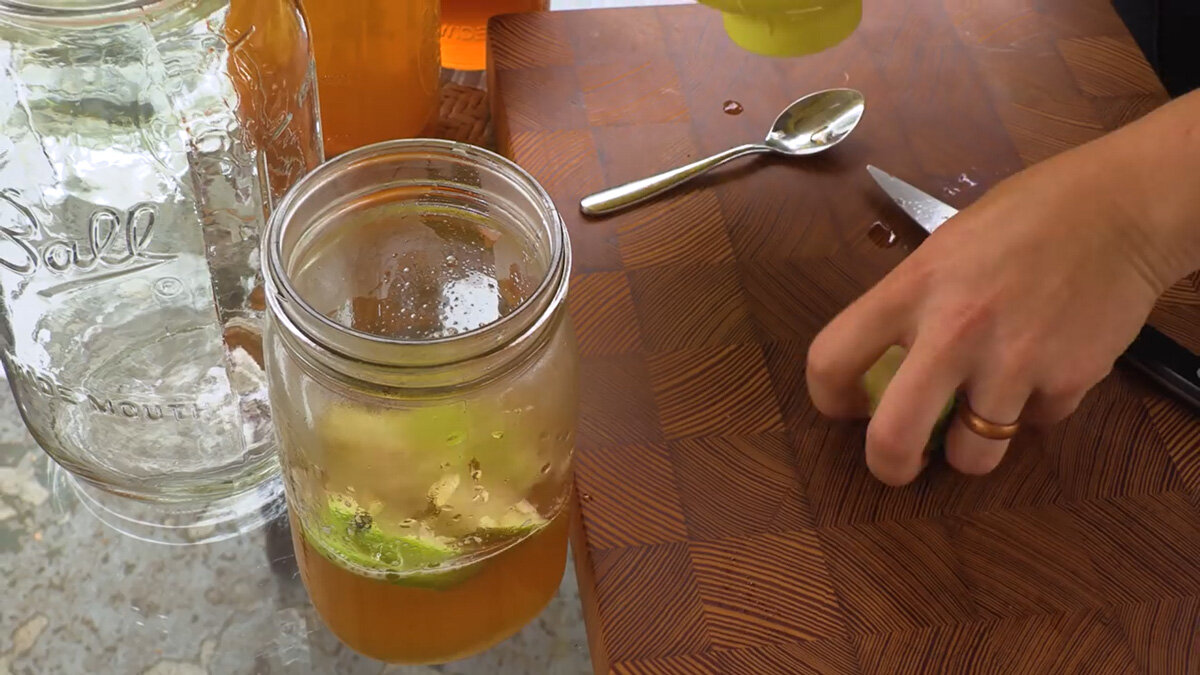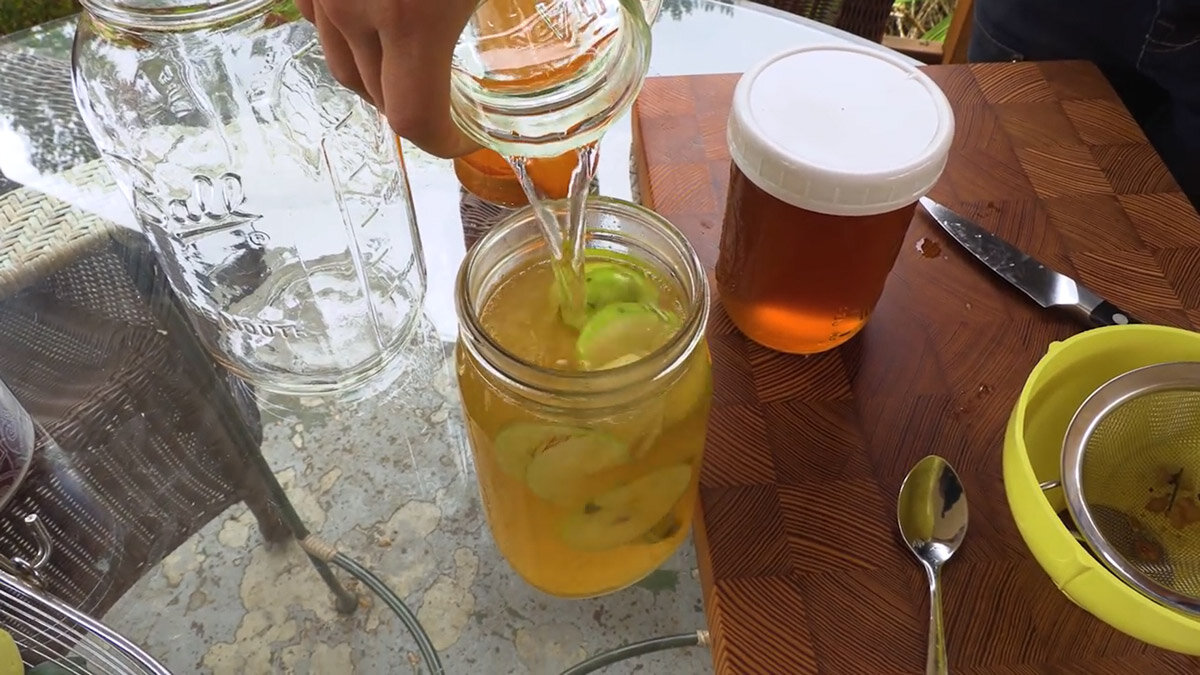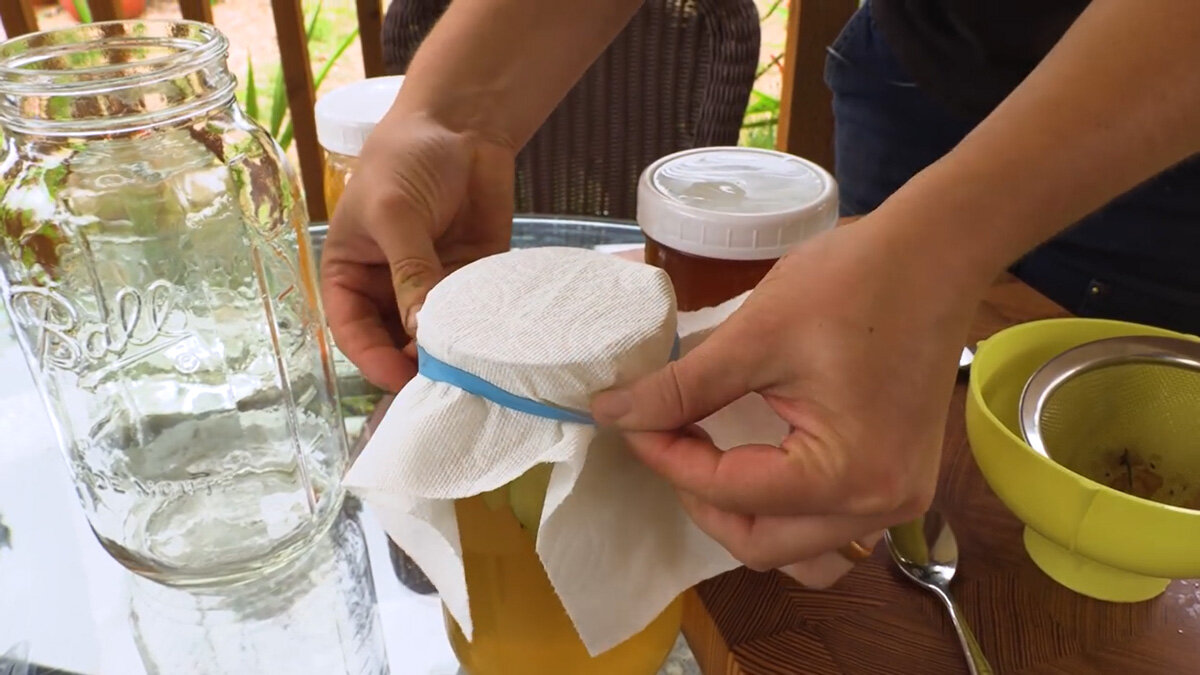Homemade Apple Cider Vinegar & Pressing Cider
Learn just how easy it is to press your own apples and make your own homemade apple cider vinegar from just a few simple ingredients.
One of my favorite summer and fall activities here on the farm is pressing apple and pear cider. In this video, I'll show you how to make fresh apple cider, how to pasteurize it to use in all sorts of recipes, and how to make homemade apple cider vinegar.
Soon we'll even be making hard cider and kombucha with this fresh pressed juice. This is a great way to use up several hundred pounds of pears and apples each year and end up with a delicious sweet treat that we can preserve and enjoy the rest of the winter long.
Watch the video below to see my antique cider press in action! Then for a good laugh, be sure to check out how I turned my hand-crank cider press into a motorized cider press!
Why I Love This Recipe
Homemade apple cider vinegar is fantastic for so many reasons. Aside from the incredible health benefits and countless uses in the kitchen and around the home, I’m all for using up what you have and not letting anything go to waste.
Turning hundreds of pounds of apples into fresh-pressed cider, which then gets transformed into apple cider vinegar is a great way to use up what otherwise may have spoiled. And no, you don’t need to have your own cider press in order to make this recipe!
Ingredients
The other great thing about this recipe is that it requires very few ingredients. Most often, in the fall, you can even pick up fresh-pressed apple cider from farmstands, farmer’s markets, or even some grocery stores. If you’re able, I highly recommend picking up a gallon or two and making some of your own homemade apple cider vinegar.
Apple Juice - If you’re working with fresh-pressed apple juice, you’ll need to take the step to pasteurize it, otherwise, you can buy pasteurized apple juice from the grocery store, but do be sure the only ingredient is juice, no other fillers or ingredients!
Apple - You want to add a fresh apple for the wild yeasts that are within the apple. It doesn’t have to be the same apple variety the juice was made from, any apple will do.
Honey - The honey will add a bit of sugar for the wild yeasts to consume and grow.
Filtered Water - Good clean water is key! No chlorine or fluoridated water for this recipe.
How to Pasteurize Apple Juice
The first step some of you may need to take is to pasteurize your apple juice. If you’re using fresh-pressed juice, as I did in the video above, it’s important to heat up the juice to kill off harmful bacteria and other wild yeasts that will interfere with the apple cider vinegar process.
In order to pasteurize your apple juice, you want to bring the juice to a boil and hold it there for 20 minutes. You don’t need to be precious about this, as a little wild yeast isn’t going to be bad or harmful. The goal here is to kill off most of the yeast and bacteria that might cause the juice to spoil more quickly before it has a chance to ferment properly.
At this point, the apple juice is ready to drink as cider or to be used to flavor kombucha or a myriad of other things.
How to Make Apple Cider Vinegar
Strain
After boiling the juice, filter it through a fine-mesh sieve to get rid of any unwanted grass or apple bits still in the juice.
Add ingredients
Add approximately 1 cup of apple juice to a quart-sized mason jar.
Chop a clean apple (with no wormholes or bruises) and add to the jar.
Add 1 tablespoon of honey.
Fill the jar the rest of the way with fresh, clean water.
Place a paper towel or coffee filter over the top of the jar and secure it with a rubber band.
wait
The next step is the hardest step, and that’s just to sit back and let nature do its thing. After a few weeks you’ll see something form on the top of the cider. This is called “The Mother” and it’s the beneficial bacteria that we all want in our apple cider vinegar.
Mix it up!
And that’s it! You now know just how simple it is to make apple cider vinegar. The beautiful thing about this recipe is that you can sub out nearly any other fruit juice to make any fruit vinegar. Try a few different kinds of juice to find your favorite, then use them in all sorts of ways from cooking to salad dressings (and be sure to let me know your favorite way to use your fruit vinegar in the comments below).


